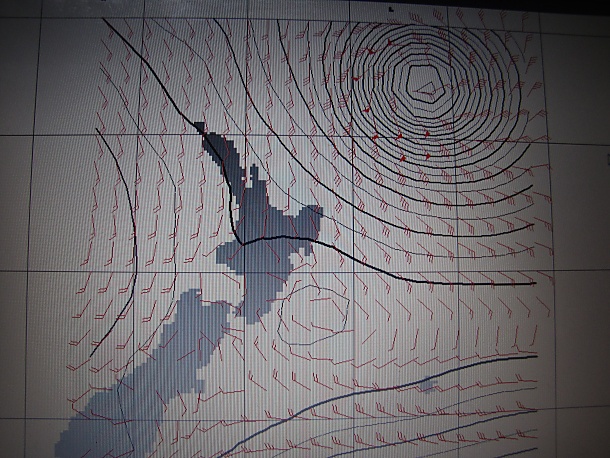While Nine of Cups, if properly prepared, may handle the rough weather in fine form, we both know that the crew is in for an unpleasant, and very long, two or three days. The shriek of the wind and the noise from everything that is banging about, slapping and sloshing is deafening. When off watch, it is difficult to sleep because of the erratic and extreme boat motion. When on watch, especially in the high latitudes, even with layers of clothing and foul weather gear, we are always cold. We are usually seasick, no matter what meds we take. Everything takes twice as long to accomplish because of the pitching and rolling of the boat, and we can be sure of sustaining half a dozen new bruises. Even doing something as mundane as using the head is an ordeal.
Topsides, it is total chaos. We usually remove the dodger and bimini, so there is very little protection in the cockpit. The sea spray and rain are horizontal, stinging our eyes and making it hard to breathe. We have often donned our diving masks and snorkels, just to be able to see anything. We use safety harnesses, of course, and clip ourselves to the boat, even in the cockpit. If it becomes necessary to leave the cockpit to attend to some problem, even though we take every precaution, it is still dangerous. The harness and jackline may save our lives, but it won't prevent us from getting hurt, and we're invariably totally drenched by the time we make it back to the relative safety of the cockpit.
If anything can be seen, it is the towering waves rushing towards the boat. We can't help but recall all the stories we've read about boats being pitch-poled or rolled, and can't imagine how the boat can possibly survive that next really big wave. But it does, and then the next one and the one after that. We try to focus, instead, on all those other stories we've read, about crews, fearful for their lives, that sent out Mayday calls and were rescued, only to learn that their boats were found a few days or weeks later, floating along peacefully and totally undamaged.







